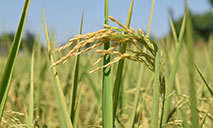Chinese architect rekindles public nostalgia through efforts to restore ancient buildings in SW China’s Guizhou province
 |
| Photo shows a street in Yunshantun village, Anshun city, southwest China’s Guizhou province. (Photo/Zhou Yanling) |
Yue Jian, a post-70s architect, has remained dedicated to restoring ancient buildings in villages in southwest China’s Guizhou province for the past eight years, aiming to increase public awareness on the protection of ancient villages.
Yue came up with the idea of restoring ancient buildings in 2012 when he found that ancient residential buildings in Yunshantun, a remote mountainous village built in the early Ming Dynasty (1368-1644) in the province’s Anshun city, had fallen into a state of disrepair. At that time, most villagers had left Yunshantun, also a famous national historical and cultural village, leaving old houses vacant and unprotected.
Later, Yue visited Ruan Yisan, a professor at Tongji University in east China’s Shanghai and a famous expert on heritage protection and cultural relics, hoping to bring more talents along to repair ancient buildings in the village. With the assistance of professor Ruan, Yue participated in the restoration of an ancient castle in France and went on to establish the Tunbao work camp, the fourth volunteers’ camp in China dedicating to heritage conservation.
The Tunbao work camp repaired an ancient residential building that was built about 100 years ago in Yunshantun, the first such site it restored after the team first came into being. More than 20 Chinese and French volunteers, as well as local craftsmen, participated in the restoration work for the house.
The establishment of the Tunbao work camp took aim at letting the public take part in the restoration work of ancient buildings, Yue said, adding that the employment of local craftsmen not only helps with passing along traditional building techniques but also increases their incomes.
Following the principle of keeping the original appearance of ancient buildings unchanged, the work camp has since repaired three residential buildings in Yunshantun village while helping villagers to renovate their houses. Yue has gone about repairing ancient buildings in villages every summer since 2014.
Recently, an exhibition on the protection of ancient buildings in Guizhou’s rural areas that was initiated by Yue kicked off at the Guizhou Museum, where craftsmen from Yunshantun set up a pavilion featuring some of the discarded wooden materials from the village. The exhibition showcases ancient building restoration techniques through displays of 266 pictures, seven model houses, and 45 traditional carpenters’ tools, bringing back nostalgic memories for visitors to the museum.
“By setting an example for the repair of ancient buildings, we hope that villagers will take the initiative to protect and make good use of ancient houses,” Yue said, explaining that many villagers have returned to Yunshantun in recent years to repair their own old houses, some of whom have successfully turned their houses into homestays and cafés.
Over the past eight years, 257 volunteers from France, the United Kingdom, Norway, and other countries have participated in the restoration work for nine historical buildings in Guizhou. Some volunteers also learned about restoration techniques and intangible cultural heritage from local craftsmen.
 |
Photos
 Bumper harvest presents a magnificent scene of terraced rice paddies in SW China's Luzhou city
Bumper harvest presents a magnificent scene of terraced rice paddies in SW China's Luzhou city In pics: life of Siberian tigers in NE China's breeding center
In pics: life of Siberian tigers in NE China's breeding center Explore wonderland created by an alpine lake cluster in SW China's Yunnan
Explore wonderland created by an alpine lake cluster in SW China's Yunnan In pics: Museums across China unveil creative and culturally-inspired mooncakes
In pics: Museums across China unveil creative and culturally-inspired mooncakes
Related Stories
Copyright © 2021 People's Daily Online. All Rights Reserved.






